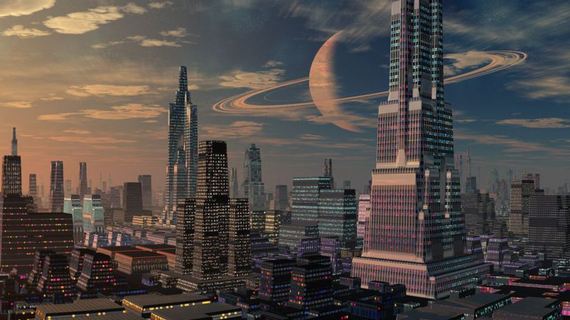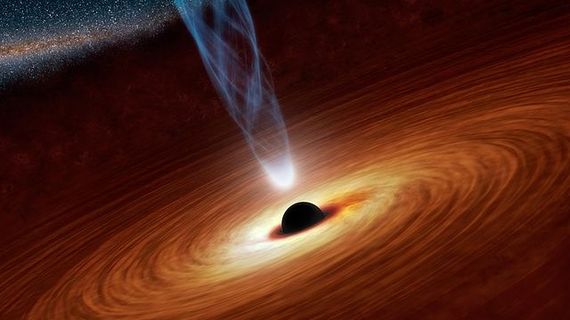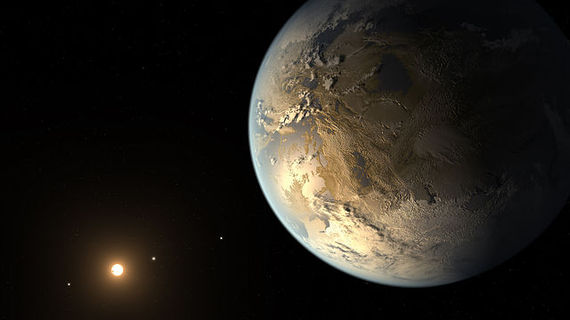The more you critically think about what interstellar travel implies, the more the prospects for it seem to be based upon fairy tales and magic. I tried to raise some of these issues in my previous blogs: The Dismal Future of Interstellar Travel, and Interstellar Travel?...Nah!. In addition to the literally hundreds of comments that these articles inspired across the Internet, there was one notable and thoughtful critique about my premise written by Paul Gilster at Centauri Dreams: 'The Cost of Interstellar Travel'. It was not my intent to be the Grinch that Stole the Cosmos, but as an astronomer and avid science fiction reader, I am frustrated by the naivete of many of the ideas I have come across, which seem inspired less by science than by Harry Potter. Here is my "killer" list of issues:
OK. Let's go ahead and use black holes or worm holes like the magical Big Boy civilizations do in science fiction. Here are some unpleasant facts to pop that balloon.
Annoying Fact 1: Black holes are unavailable.
To use a black hole as a transport system you need to find one first. Astronomers are real good at that because black holes are messy eaters. They swallow very hot gas and produce x-rays that can be seen across the light years. The nearest known black hole after several decades of searching our neck of the Milky Way is called Cygnus X-1 and is located about 6,100 light years away. To get to this black hole and use it for interstellar travel, you first need... interstellar travel!
Annoying Fact 2: You can't make your own black hole either
Another option is to make your own black hole. The favorite method is to grab ahold of one of those microscopic quantum black holes at the so-called Planck Scale of spacetime and enlarge it to human or spacecraft dimensions. Then like a miner bracing the rock walls with timber, you shore it up with Kip Thorn's anti-gravitating matter to stabilize it. That's what the clever aliens did in Contact and in Interstellar, and perhaps even 2001: A space odyssey. But there is one big problem. Our spacetime doesn't look like the fashionable 'quantum foam' model that everyone likes to use as a starting point. There have been several different searches for evidence of a grainy quantum shape to spacetime at the Planck Scale of 10^-33 centimeters.
Since 2009, astronomers such as Robert Nemiroff have used the photons from gamma ray bursts to see if the higher energy photons traveled a longer distance through space than the lower-energy ones. If spacetime is foamy, then the higher energy photons will be scattered around a bit more like the balls in a Pachinko game compared to the slightly more direct route taken by the lower energy photons. Well, several attempts to measure the arrival time differences have turned up Nada! Zippo! Nothing! Also, folks have looked at the polarization changes which should also take place and also get null results at a level hundreds of times smaller than the Planck Scale. So, there is no evidence that John Wheeler's quantum spacetime foam model from the 1960s with quantum black holes exists or is in any way an accurate way to describe what the bedrock-scale of spacetime looks like. It could be stringy, or loopy but not frothy. That means Mother Nature won't let us inexpensively borrow some already-existing phenomenon in our universe to co-opt into a transportation network. Even worse, those folks that work in string theory and M-theory say that our 3-brane universe is located in the 11-dimensional Bulk where only gravity can travel from one 3-D space to another. The very particles that make up our bodies and starships cannot travel outside of their 3-D brane spaces. These assertions from Brane Theory have yet to be tested!
Annoying Fact 3: If you found a black hole it would kill you.
The only way that Nature can make black holes today is through stellar evolution and the supernova mechanism. Supermassive black holes are created through accretion of matter as they grow, but the nearest of these is 27,000 light years away so you need interstellar technology to get there before you can use it for transportation... an interesting tautology!
Anyway, stellar-sized black holes are lethal because with a horizon only a few tens of miles in radius, gravitational forces will pull you and your ship apart before you got within a few thousand miles of the horizon. You would never get close enough to the event horizon to go inside and use it to short-circuit space. If someone reading this has a good way of how to negate the Inverse-Square Law of Gravity, or the Inverse-Cube Law of Tidal Forces which will both kill you, then go for it.
Annoying Fact 4: You will not be bailed out by a super civilization
Many science fiction stories like to jump-start their tales of galactic exploration by using the deus ex machina of an advanced civilization giving us interstellar travel as a gift. This is a common, human literary and theatrical device that is as old as the classical Greek plays, but it doesn't work as a documentary for how the Real World works. There is only one set of fundamental physical laws per universe. If not, our universe would exist in chaos where one region of space had different laws than another. Astronomers would EASILY see this effect, and so could you by looking at the night sky! So, advanced civilizations have to play by the same rules that we do. You might fantasize that they know something that 21-st Century scientists don't, but that's dumb, and I would not bank on it. Besides, how long do you want to wait before some aliens hand over what is probably one of their most important secrets? What would be the cost they would exact from us in exchange?
Annoying Fact 5: Space is Lethal
There is no technology on the drawing boards that has avoided the combined lethal effects of radiation and dust/asteroids in interstellar space for spaceships traveling at very high speeds. You cannot use magnetic fields to shield you from dust grains traveling at 50% the speed of light and impacting like small atomic bombs! The faster you go, the less radiation you absorb, but the more lethal are the interstellar dust grains. The slower you go, the longer your journey will take and the greater the absorbed radiation and chances for irreparable equipment failure. Interstellar travel by rocket, ion drive, or any other efficient means is caught between a rock and a hard place between these two hazards. Solving one, risks exacerbating the other and drives up the mass and cost of the mission.
Annoying Fact 6: We will already know where we want to go before we leave.
No matter what your mode of travel, we will NOT make the journey unless we know well in advance that there is an Earth-massed planet there, in the star's habitable zone where you can have liquid water, and with an atmosphere that is breathable. At the current rate of exoplanet detection and study, we will have a catalog of all Earth-massed planets out to at least 1000 light years from Earth by the end of this century... I promise! Statistically, 10 percent will be in the star's habitable zone. But the kicker is the atmosphere. After mounting a multi-trillion-dollar mission, and traveling for centuries to get there, why in the world would you settle for living in a sealed colony on the surface of such a world with a non-breathable atmosphere? Of course you won't! Instead you will search from Earth for a water-rich planet like Earth with an oxygen atmosphere.
OK... Oxygen atmospheres are only produced by biospheres, so what you are looking for is a planet you already know has life...and bacteria and viruses lethal to humans. Do you think that after searching 1000 light years we will have found our first living planet...or do you think life is rarer? BTW, it took 2 billion years for Earth bacteria to actually build a 22 percent oxygen atmosphere we could breathe!
Annoying Fact 7: The ugly word... Eugenics.
Interstellar travel will produce mutations in the human genome that will have to be ruthlessly purged in order not to diminish the future viability of the human gene line, thereby defeating the purpose of the entire trip. There is no religion we will take with us, or moral code we recognize today, that will allow us to terminate the number of pregnancies where the genetic mutation load is mathematically deemed to be too high... no more said.
Annoying Fact 8: No templates
There is no human civilization that has existed, or intellectual imperative, that can serve as a template for the kind of civilization we would have to be to attempt and successfully carry-out an interstellar journey. It would have to be very insect-like, with a single burning imperative that can galvanize billions of people to sacrifice and work to make it happen economically and technologically. Not even the preservation of our species would work, since only a small number of people would be 'saved' at the expense of billions of people left behind. How would you feel if you were left behind as a huge asteroid was about to terminate life?
 Global Electrification: $36 trillion in last 18 years alone (www.mckinsey.com). Largest human technological achievement, but with many practical intermediate uses as it is built up every year.(Credit: Think India)
Global Electrification: $36 trillion in last 18 years alone (www.mckinsey.com). Largest human technological achievement, but with many practical intermediate uses as it is built up every year.(Credit: Think India)
Annoying Fact 9: It's expensive as hell!
The International Space Station cost about $150 billion. The costs associated with traveling to Mars before 2060 have been estimated in 2014 by the National Research Council, and are in the vicinity of $400 billion. As for the rest of the solar system, "the development challenges associated with any solar system destinations beyond the Earth-Moon system, Earth-Sun Lagrange points, near-Earth asteroids, and Mars are profoundly daunting, involve huge masses of propellant, and have budgets measured in trillions of dollars," but at least they are far cheaper than interstellar travel and have a higher likelihood of involving a significant number of humans under safer conditions without involving 'magic' technology like wormholes and relativistic speeds!
 A mature colony near Saturn...sign me up! (Credit:Bruce Lee)
A mature colony near Saturn...sign me up! (Credit:Bruce Lee)
Bottom Line..
When you look at interstellar travel this way, it's like Dorothy said in the Wizard of OZ...There's no place like home... and for us it is a solar system with a huge amount of real estate and enough cool things to do to occupy us for millennia! In a future blog I will try to paint for you a picture of this much more exciting, near term, and doable alternative to interstellar travel.
By the way, instead of getting to Alpha Centauri in a century, could you possibly get me to Mars in a few days? The Astronomy Café over at Elysium has a mocha latte that is to die for!

